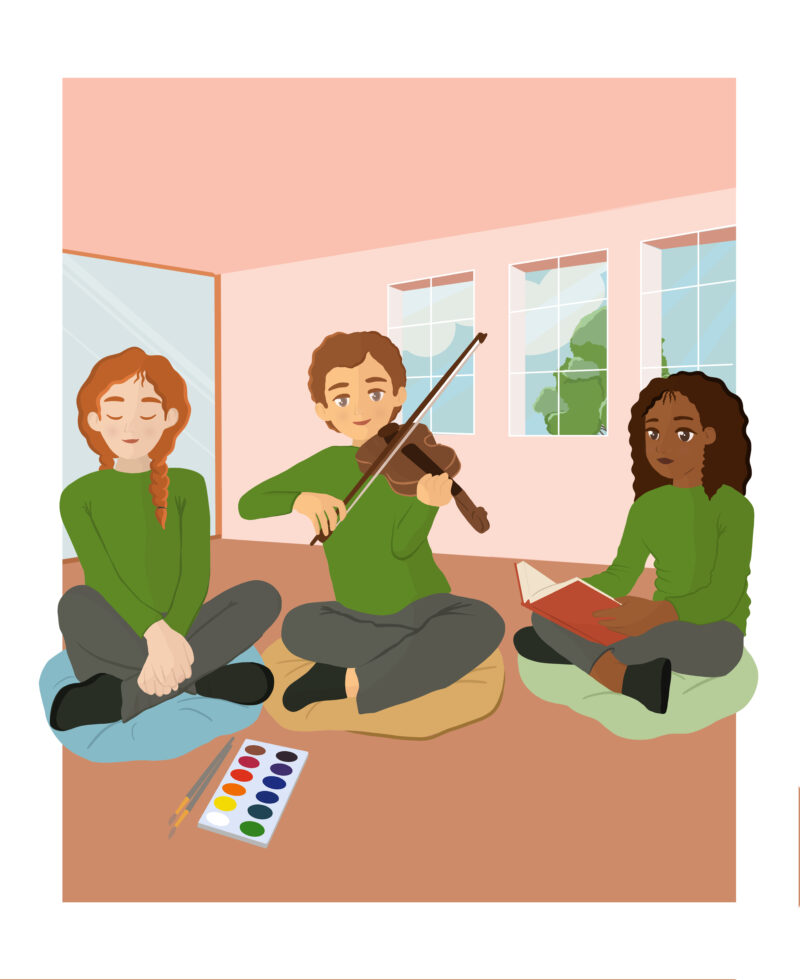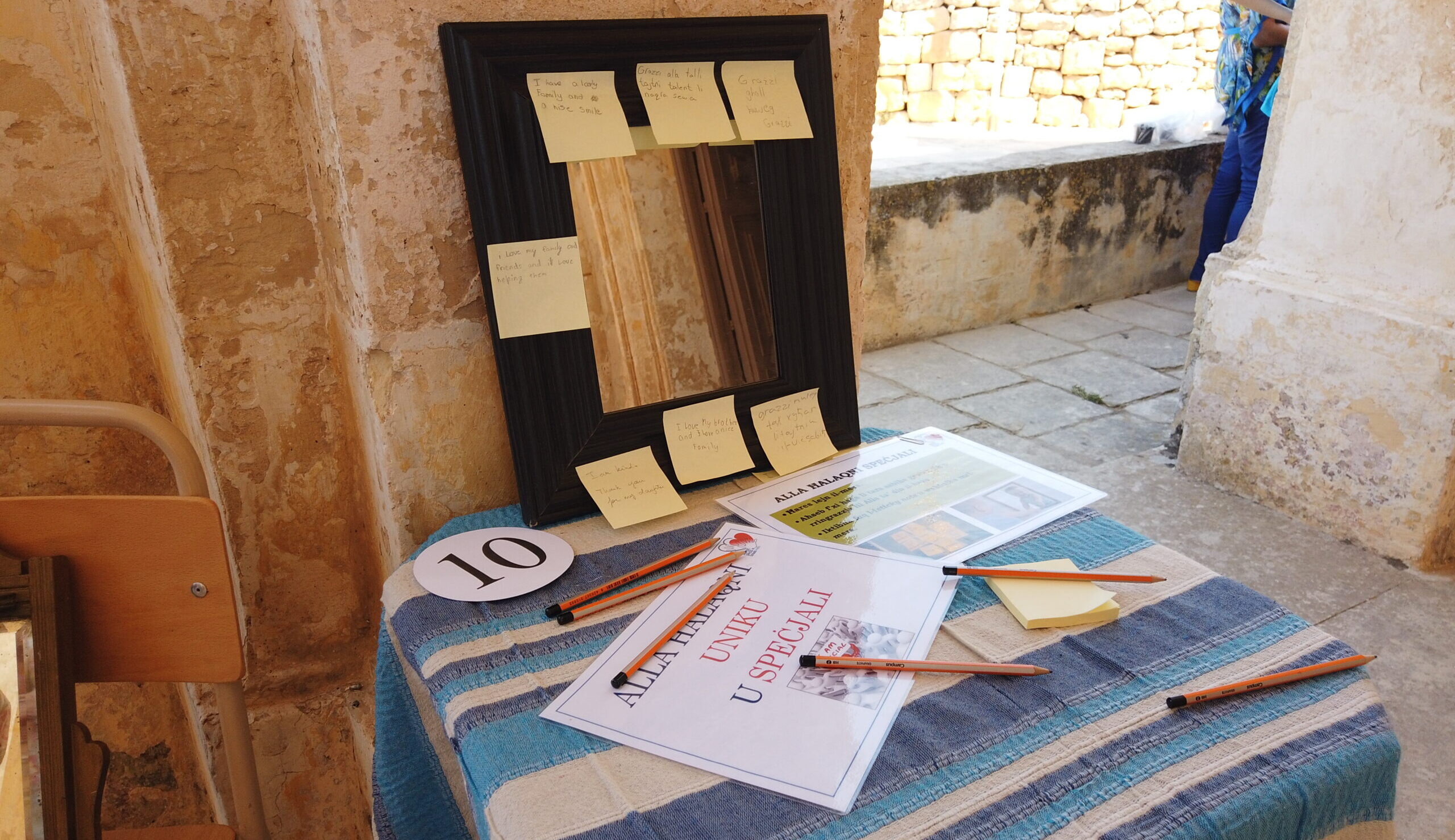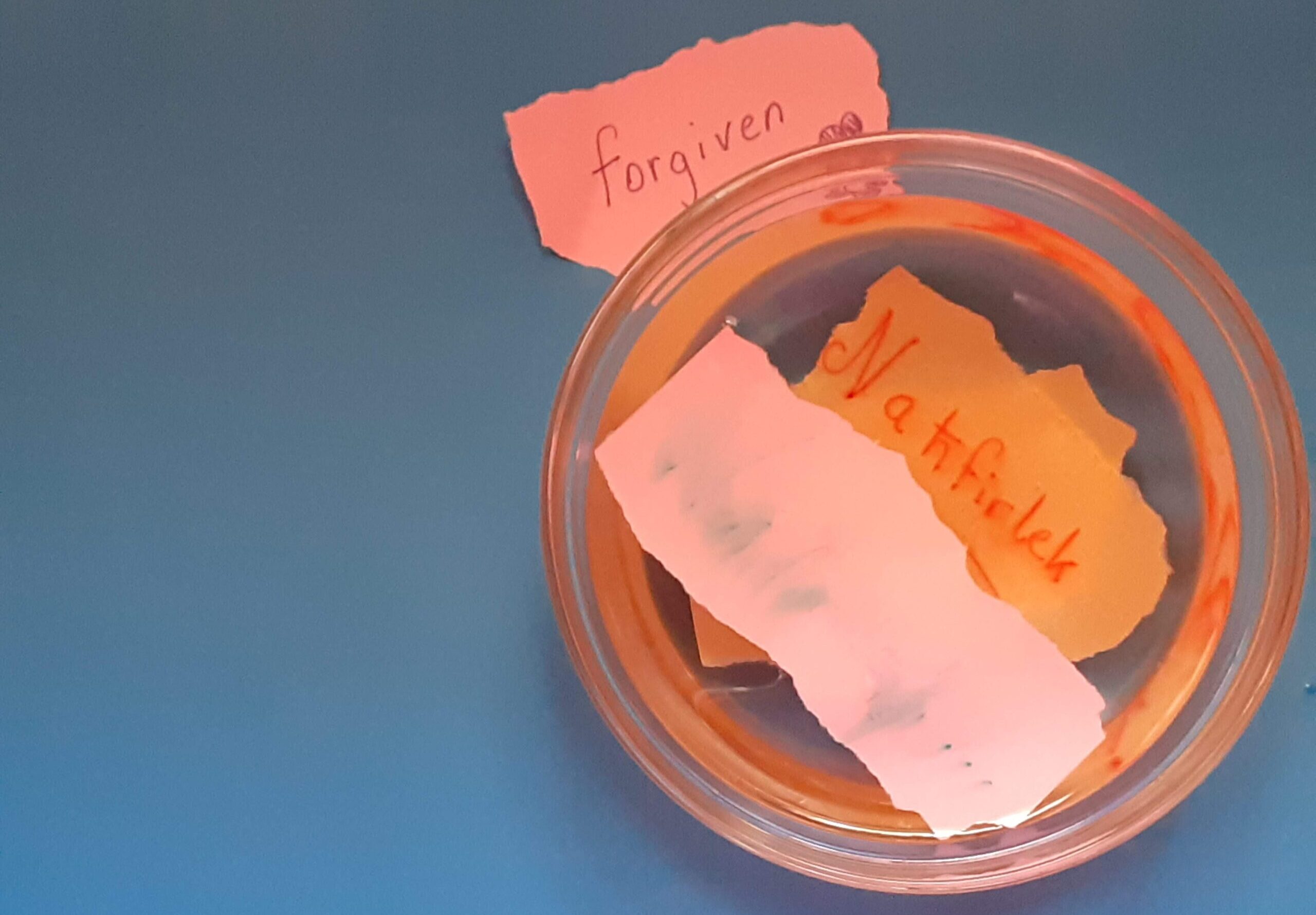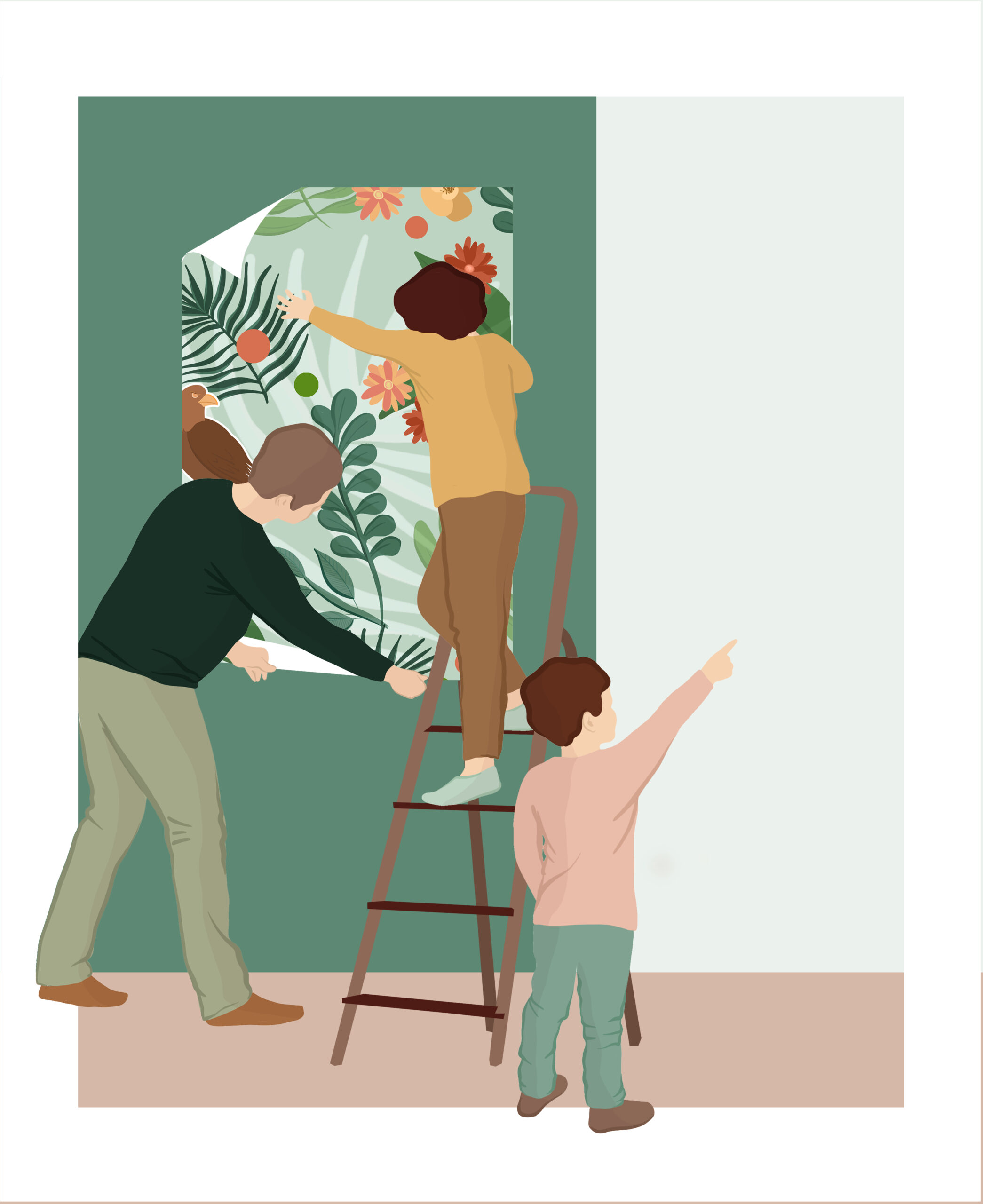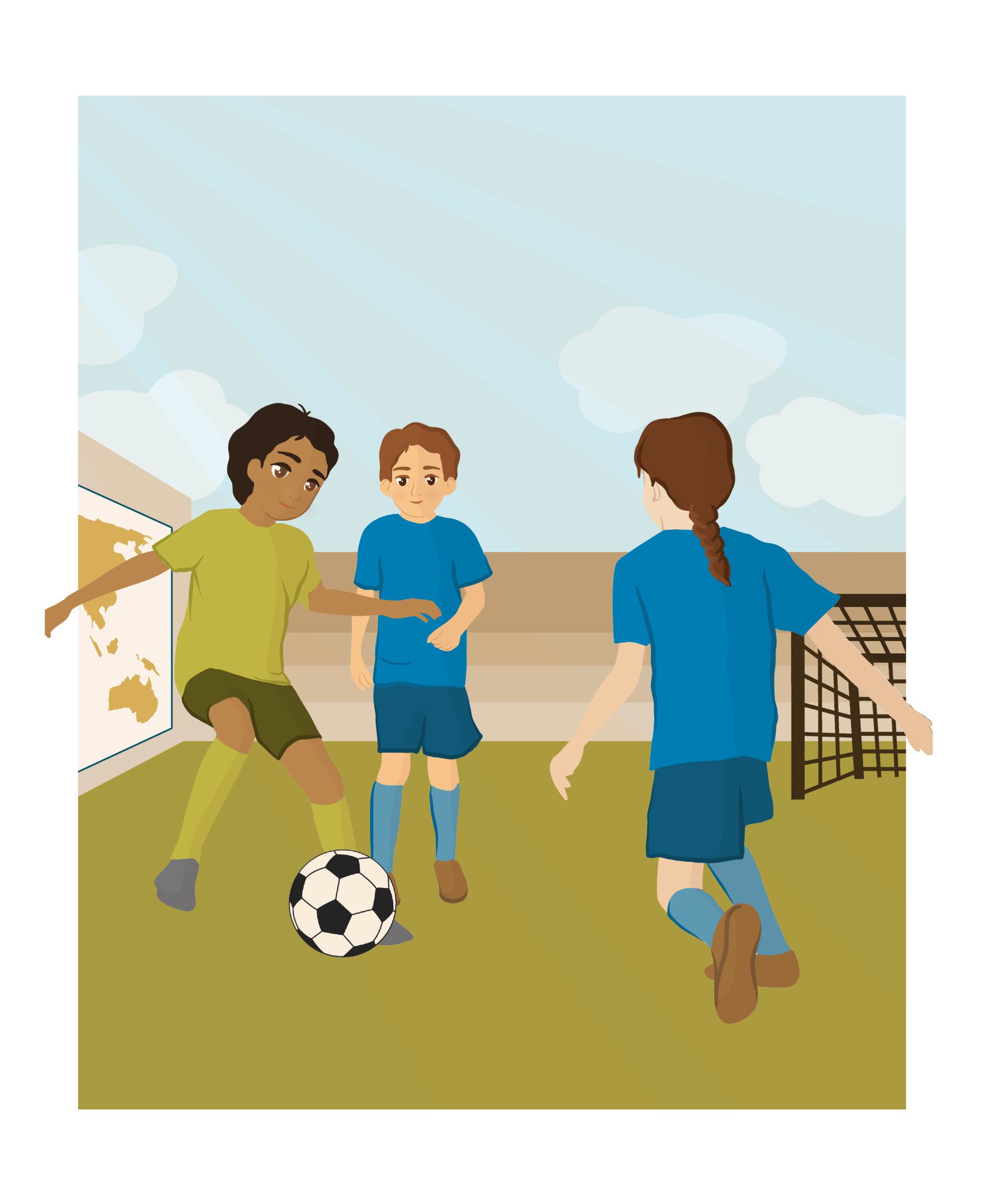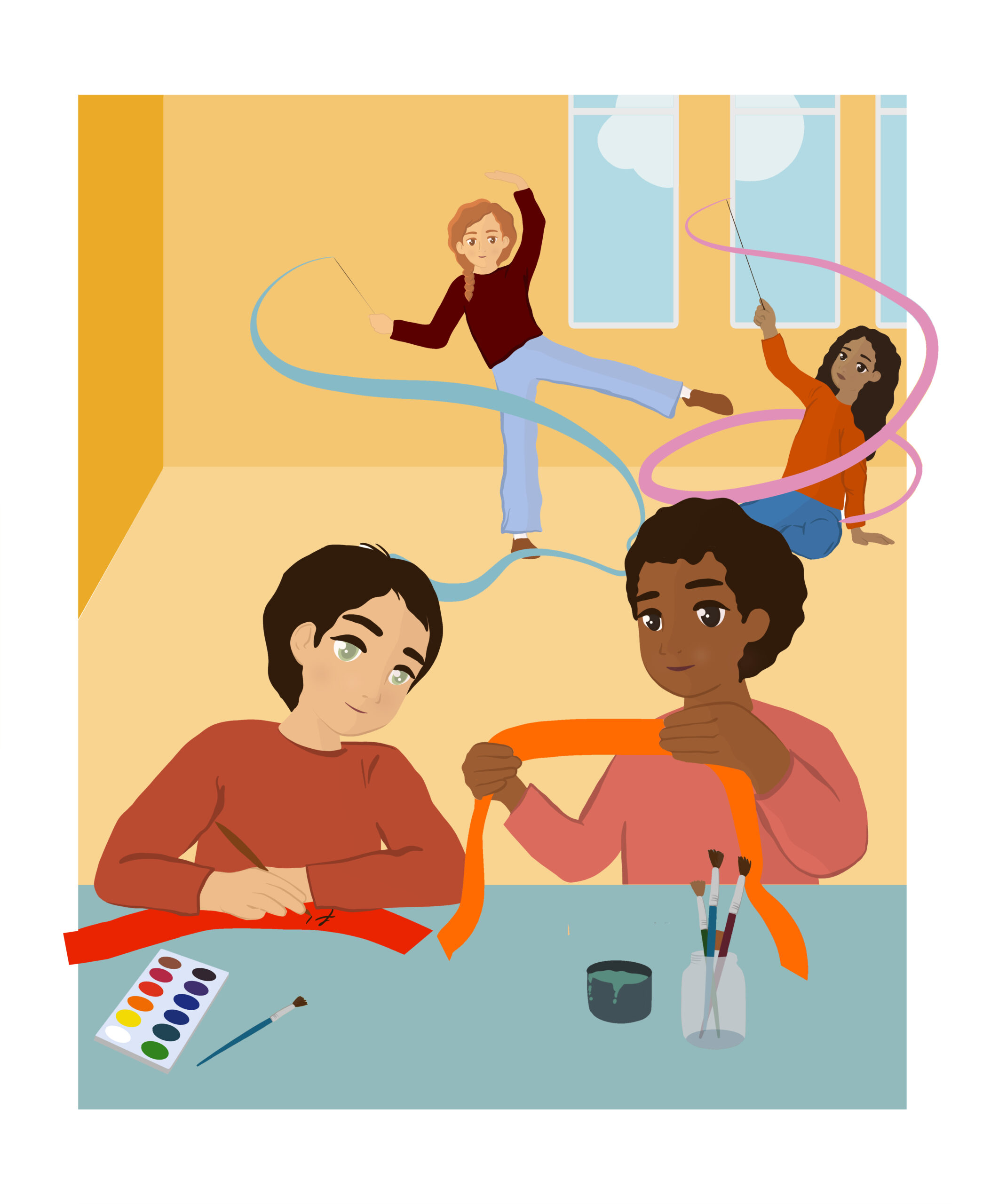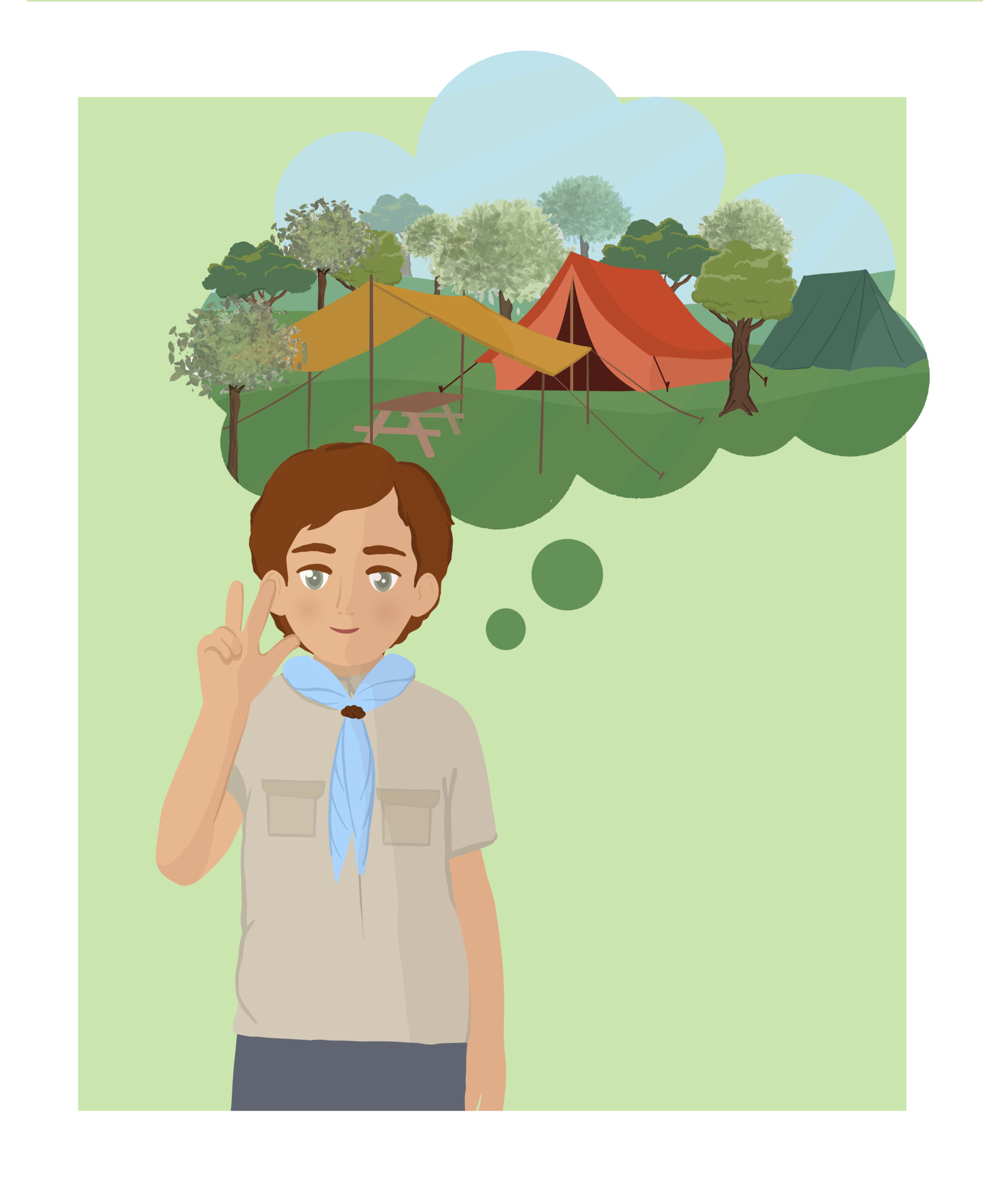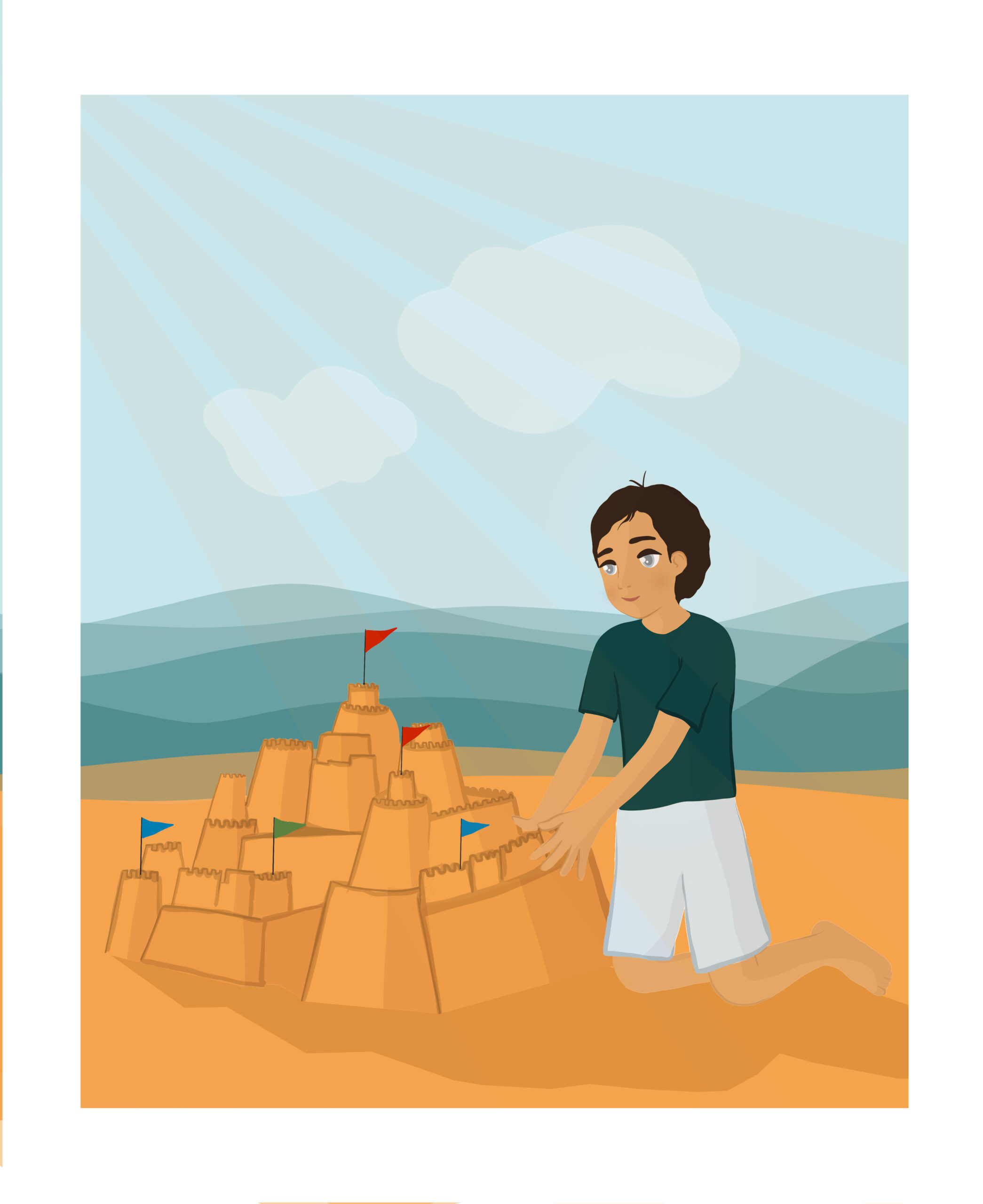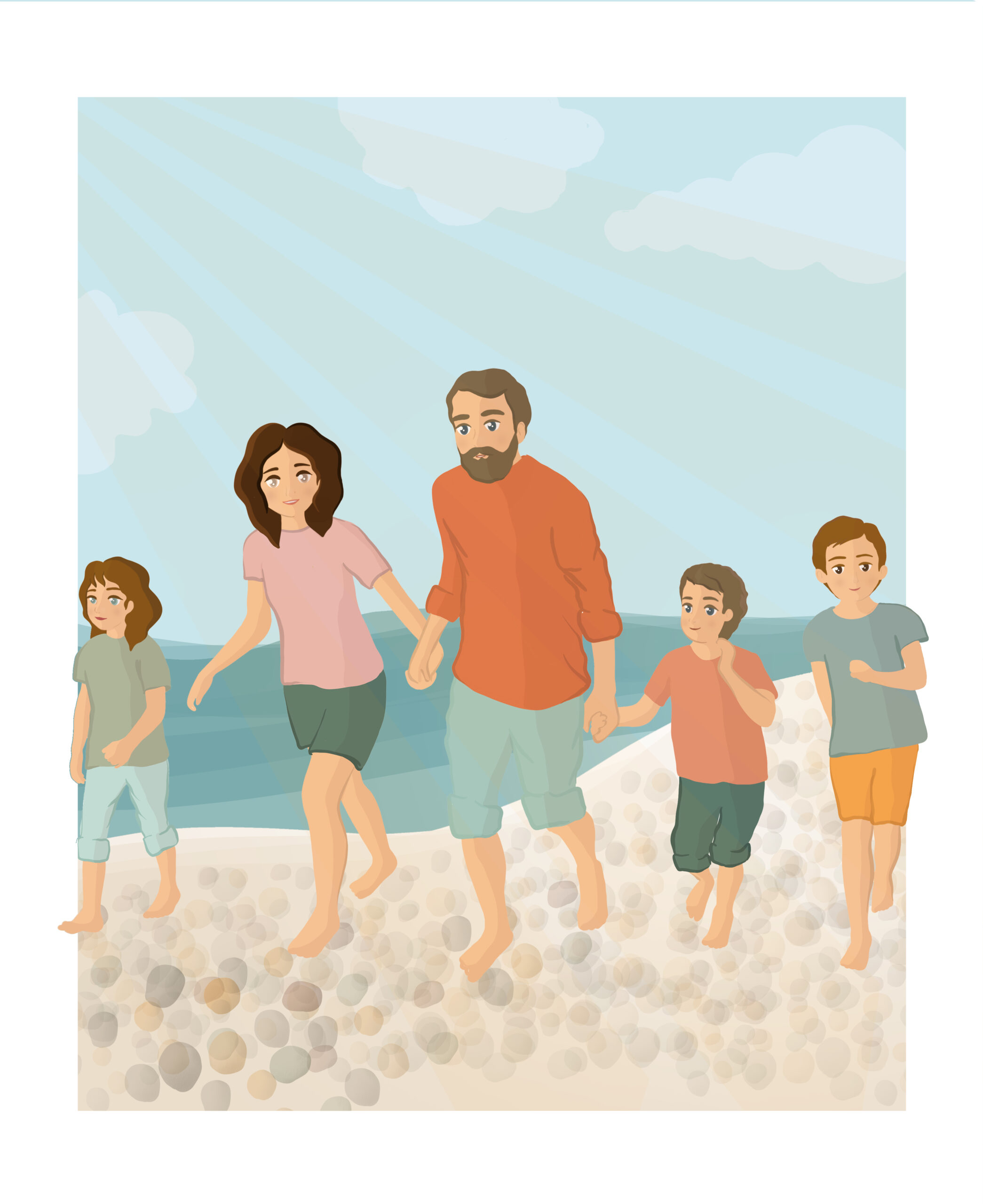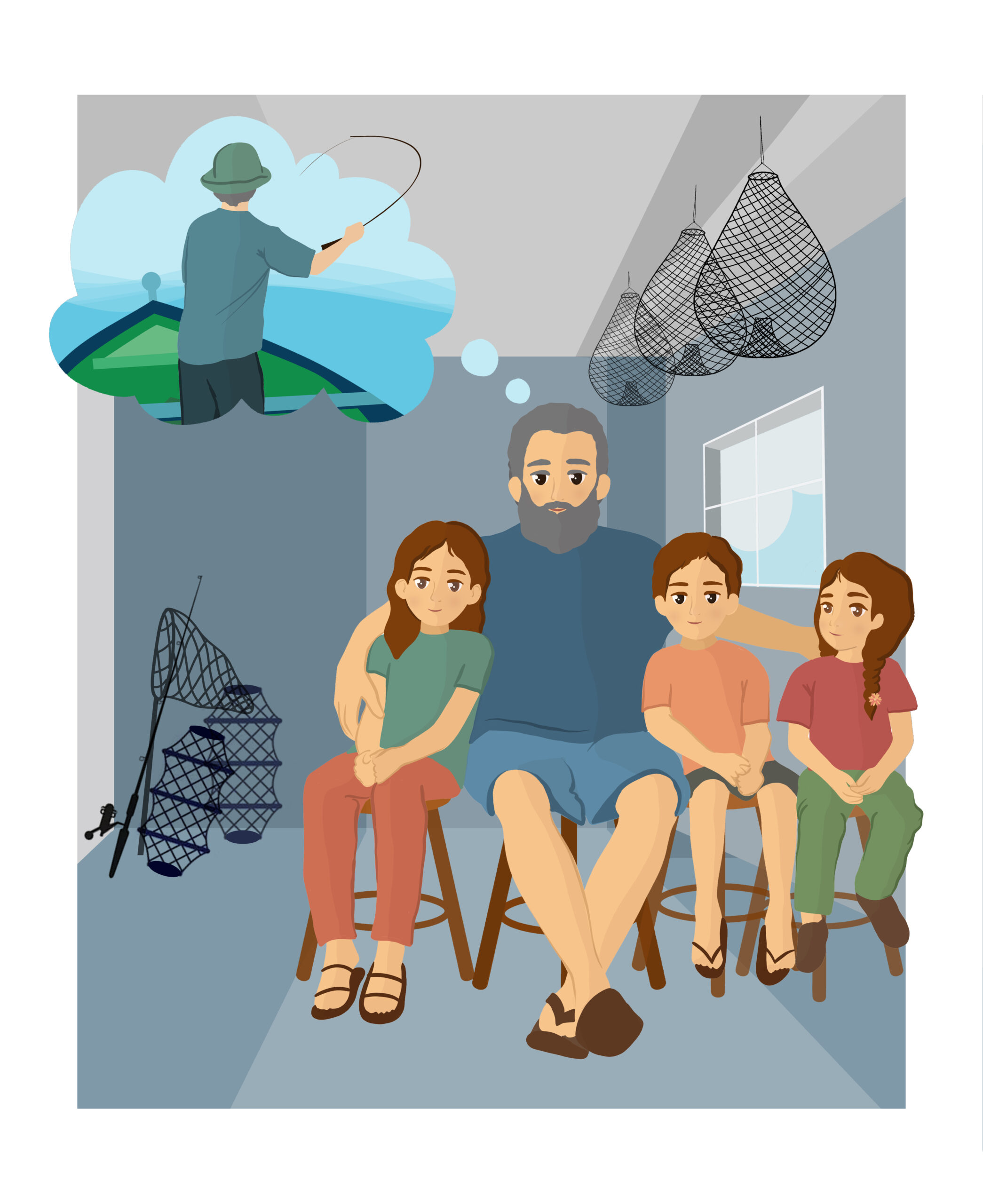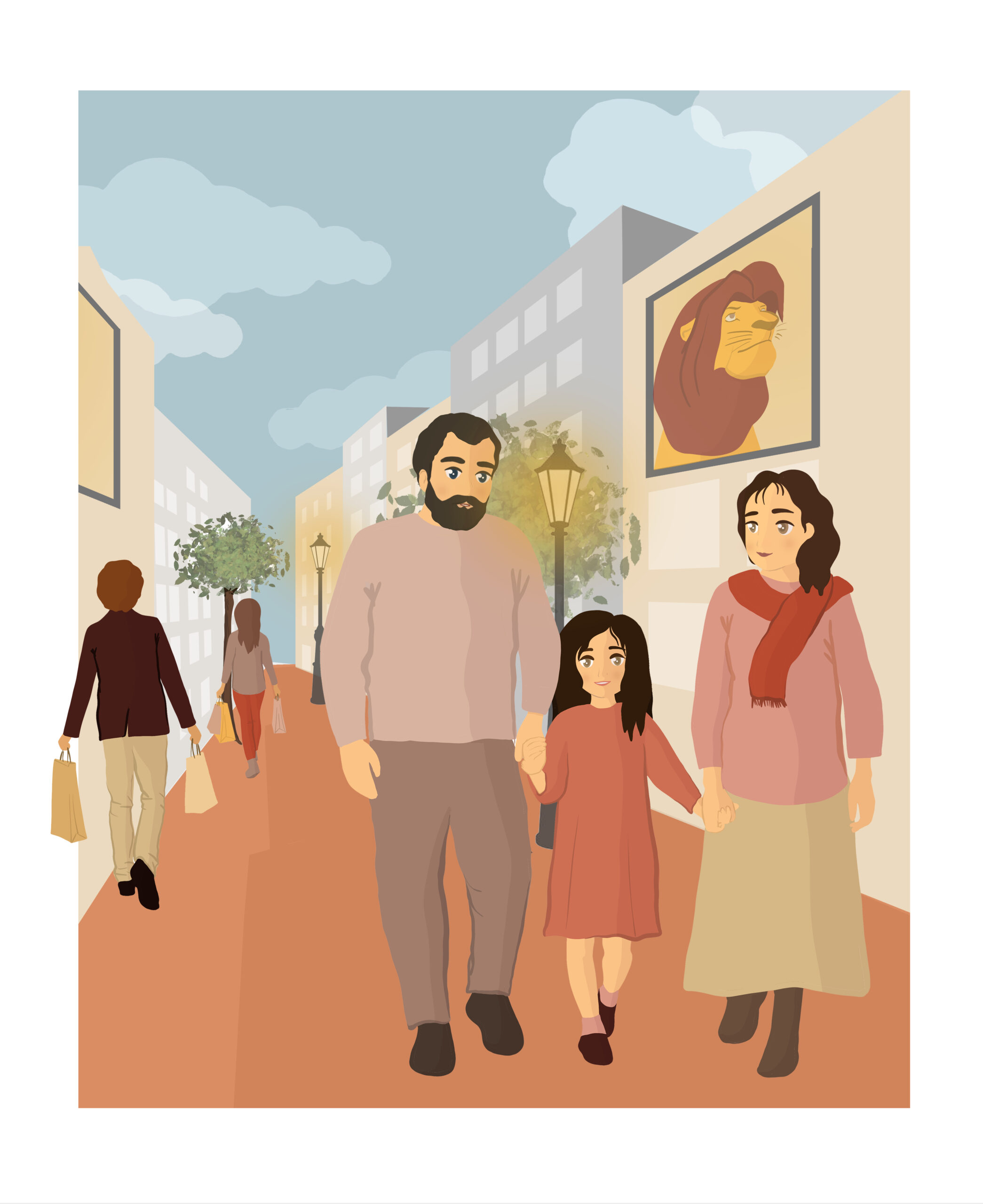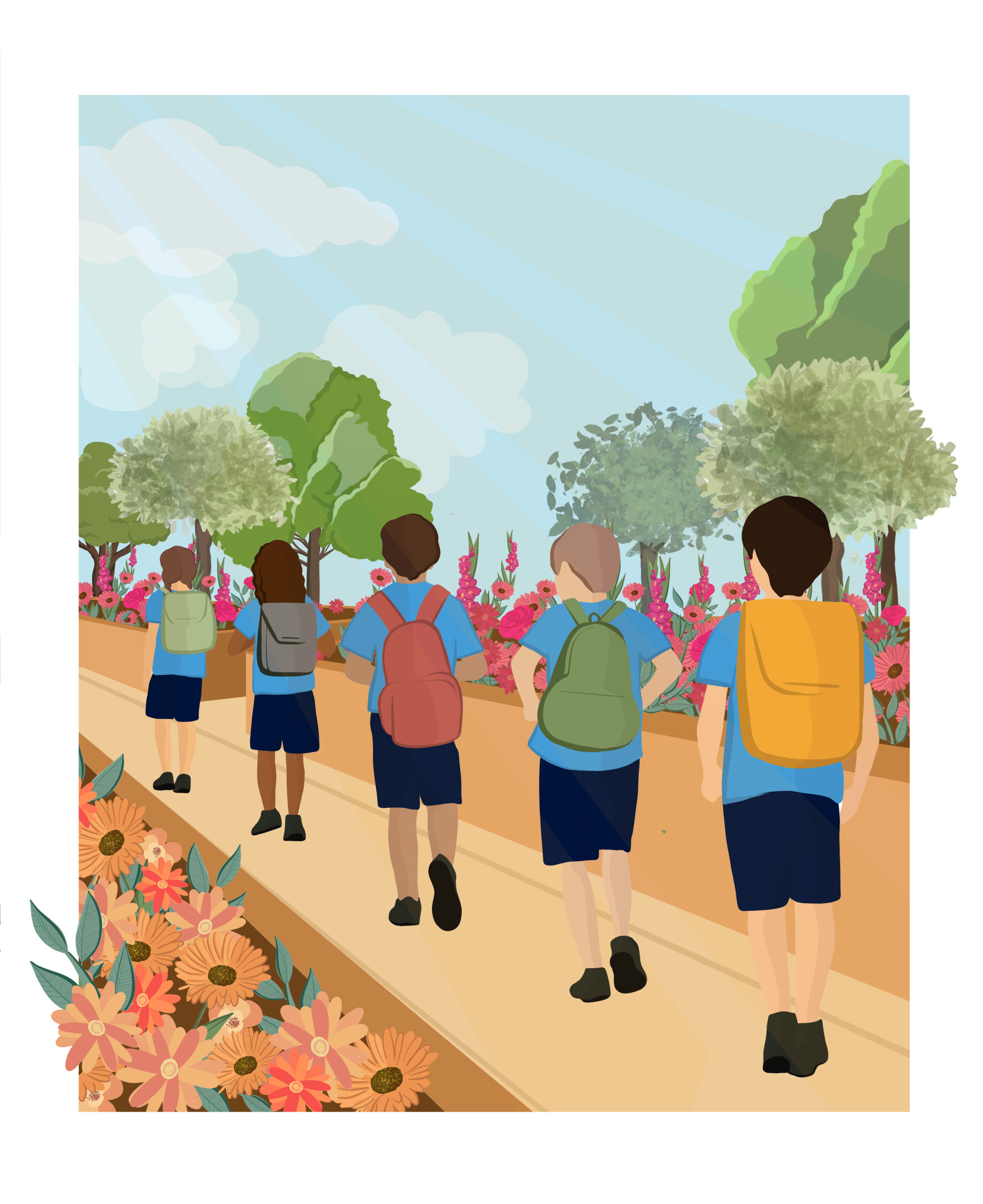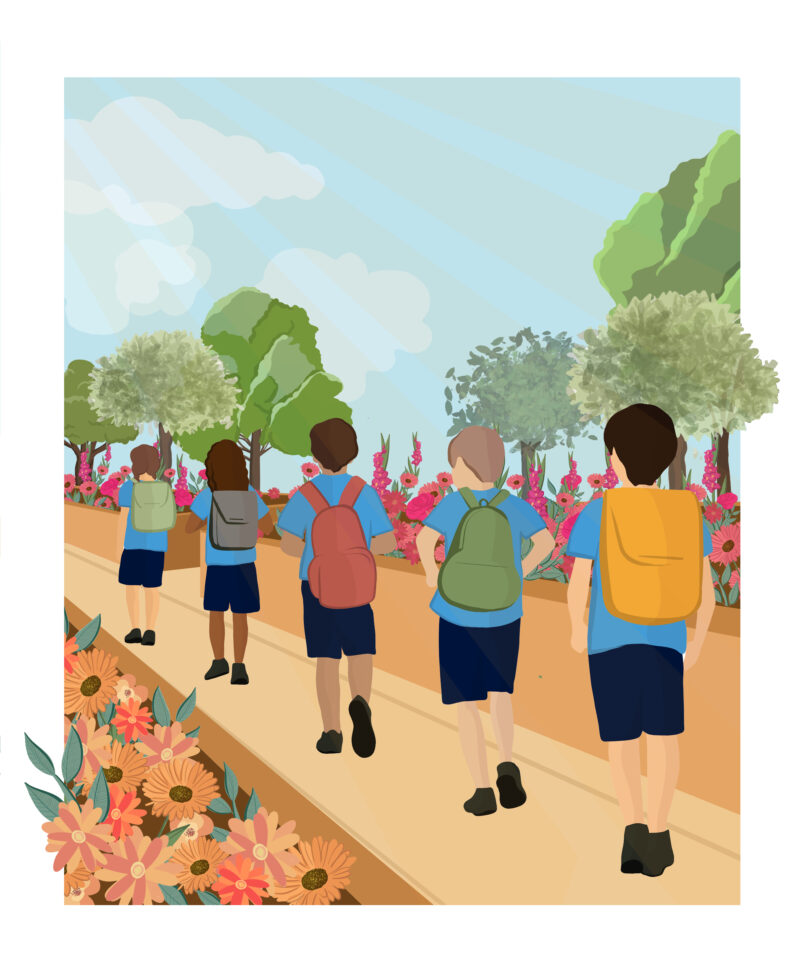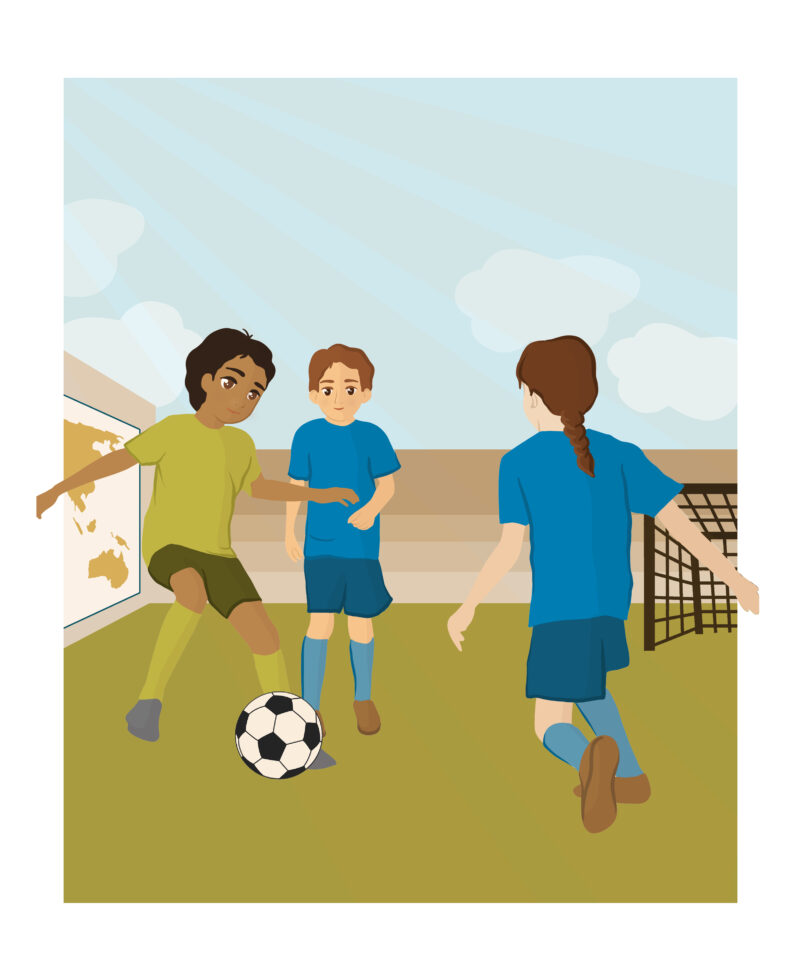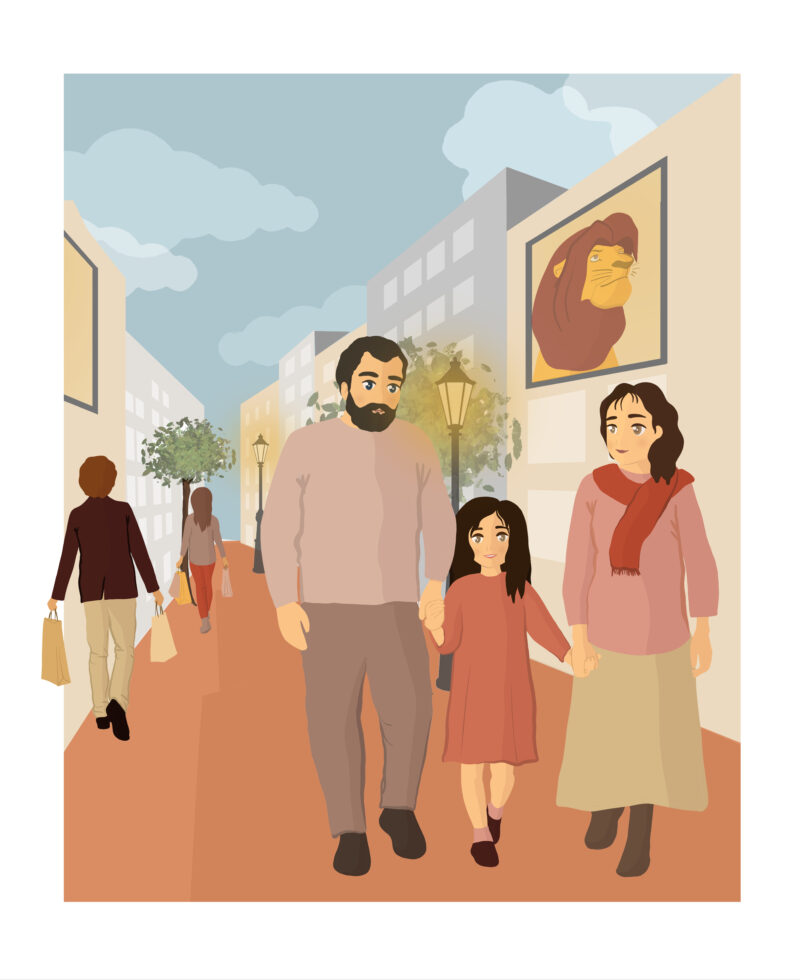The story is about children during drama class. While performing a mime with objects placed in front of them, they are reminded of Il-Quċċija – a Maltese tradition. As they look at the dance mirrors, they thank God for their talents and good qualities.
Ages
- Primary Years
- Middle Years
Topics
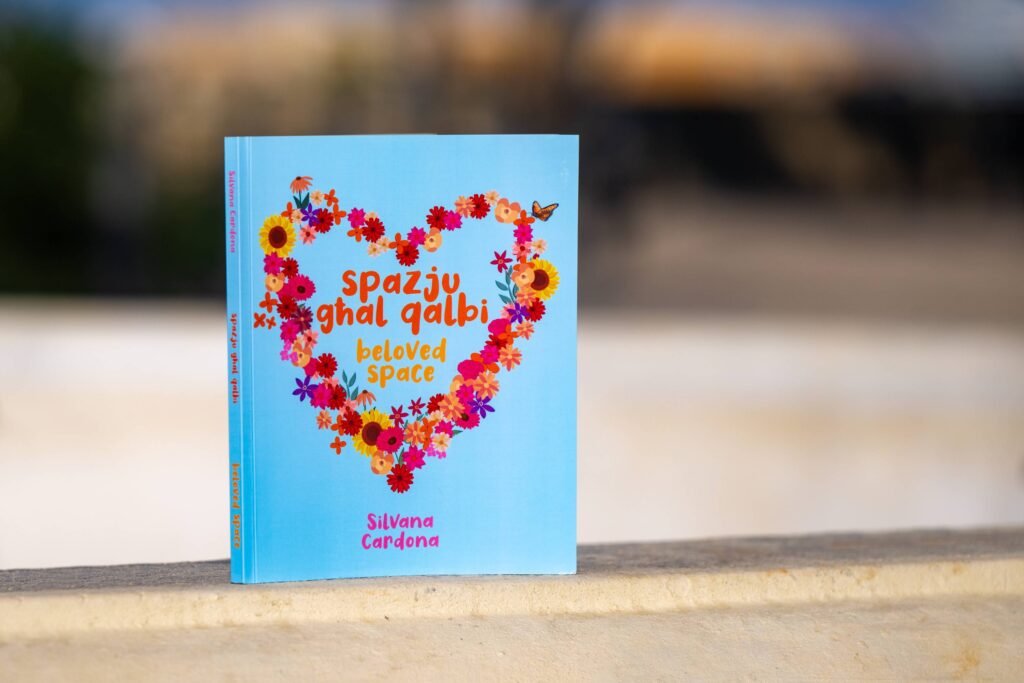
Uri u Għid – Tradizzjoni Maltija
“Isa, ħaffu ftit,” beda jgħid l-għalliem tad-drama u ż-żfin lit-tfal.
“Morru sibu l-kuxin tagħkom li hemm fl-art f’nofs is-sala u poġġu fuqu. Agħlqu għajnejkom sakemm Pete jagħmel numru ta’ oġġetti quddiem kull wieħed u waħda minnkom. Mas-sinjal tiegħi tistgħu terġgħu tiftħu għajnejkom. Imbagħad irridkom tħarsu lejn l-oġġett, tgħidu x’inhu, għal xiex jintuża u x’inhi l-karriera ta’ min jużah. Kulħadd fehemni?” staqsa l-għalliem.
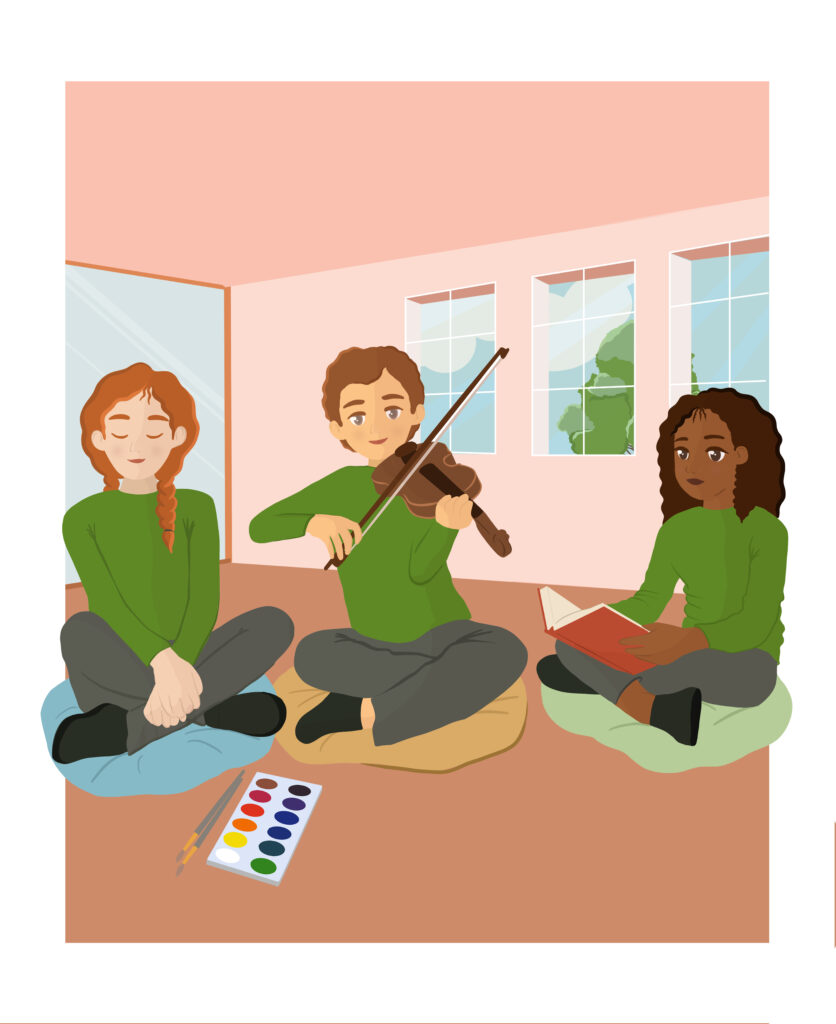
“Iva, Ser fhimniek,” weġbuh it-tfal.
“Tajjeb, mela ejjew nibdew.”
Wara ftit ħin, l-għalliem tad-drama qal lit-tfal biex jerġgħu jiftħu għajnejhom. Kull wieħed minnhom sab oġġett quddiemhom u wieħed wara l-ieħor bdew jgħidu:
“Jien għandi mqass u jużah il-ħajjat.”
“Jien għandi vjolin u jużah mużiċist.”
“Jien għandi ballun u jużah plejer.”
“Jien għandi mera u pettne, u tużah il-hairdresser.”
“Jien għandi kuruna tar-rużarju u tintuża minn nies reliġjużi u persuni li jitolbu.”
“Jien għandi pinzell u kuluri u jużahom il-pittur jew l-artist.”
“Jien għandi ktieb u jużah xi ħadd l-iskola, xi għalliem jew kittieb.”
“Jien għandi kamera tar-ritratti u jużaha l-fotografu.”
“Prosit! Issa rridkom tagħmlu mima żgħira skont dak l-oġġett li għandkom,” qalilhom l-għalliem.
Għalhekk min kellu l-imqass beda jċaqlaq l-imqass daqslikieku qed jaqta’ biċċa drapp bħalma jagħmel il-ħajjat. Min kellu l-vjolin beda jdoqqu bħalma jagħmel mużiċist. Min kellu l-ballun beda jagħti b’saqajh donnu qiegħed jixxuttja waqt xi logħba futbol.
Min kellu l-mera beda jħares lejha u jirranġa xagħru. Min kellu kuruna tar-rużarju beda jitlob it-talba tal-Missierna. Min kellu l-kuluri u l-pinzell, beda jpinġi bħalma jagħmel pittur. Dak li kellu l-ktieb beda jispjega bħalma jagħmlu l-għalliema.
Dik li kellha l-kamera tar-ritratti, iffukat fuq xena u ġibdet ritratt bħalma jagħmel il-fotografu.
Hekk kif kulħadd lesta l-mima tiegħu, waħda tifla qalet lill-għalliem,“Ser, din qisha dik li l-mamà għamlet lil oħti ż-żgħira meta għalqet sena. Il-quċċija kienet sejħitilha imma ma nafx xi tfisser eżatt.”
“Iva, sewwa qed tgħid. Din li għamilna llum tissejjaħ il-quċċija, u l-ħabib tagħkom Pete ser jgħidilkom dwarha,” wieġbu l-għalliem.
Wara ftit Pete beda jgħid hekk, “Il-quċċija hija tradizzjoni Maltija u ilha tiġi pprattikata f’Malta mis-seklu 18. Meta t-tarbija tagħlaq sena, il-Maltin jagħmlu l-quċċija, fejn it-tarbija trid timxi imbe’ lejn ġabra ta’ oġġetti li jkunu mifruxa fl-art jew fuq trej, waqt li l-familjari u l-ħbieb iħeġġu lit-tarbija biex tiġbor xi ħaġa. It-tradizzjoni tgħid li l-oġġett li jintgħażel jirrappreżenta l-karriera jew il-professjoni, is-sengħa jew l-istil ta’ ħajja futura tat-tifel jew tat-tifla.
L-oġġetti li jitpoġġew jistgħu jkunu diversi, bħal ballun, pettne, mera, pinzell, kuruna tar-rużarju, calculator, imqass, ktieb, strument mużikali, flus jew kard tal-flus, żarbun tal-ballet, martell, bajda, mouse tal-kompjuter jew mowbajl.
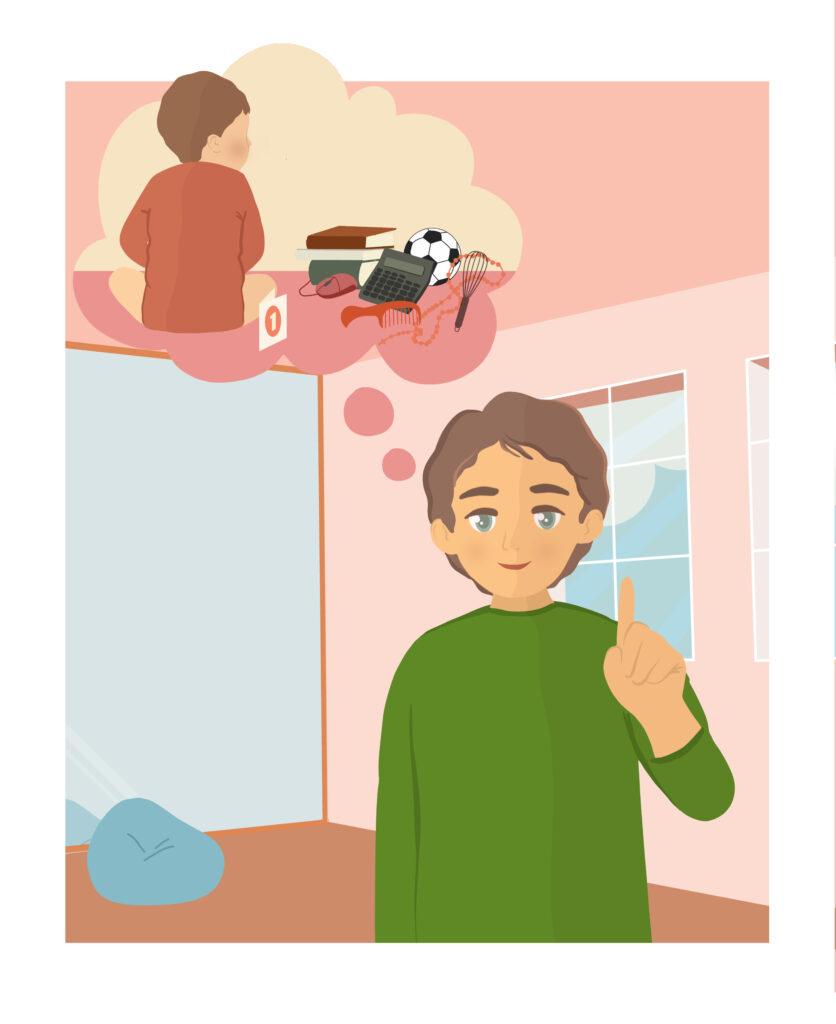
It-tfal kollha kienu grati li tgħallmu xi ħaġa ġdida u rringrazzjaw lil Pete ta’ din l-informazzjoni li tahom dwar il-quċċija.
Imbagħad l-għalliem reġa’ dar lejn it-tifla u staqsieha, “Tiftakar liema oġġett kienet qabdet oħtok fil-quċċija?”
“Iva Ser, kienet qabdet mera għax rat lilha nnifisha fiha u riedet tbus u tgħannaq lil dak il-wiċċ sabiħ ta’ dik it-tifla li kien ir-rifless tagħha stess.
“Tajjeb wisq,” qal l-għalliem filwaqt li kompla jgħidilhom:
“Mela issa nistedinkom tersqu quddiem il-mirja l-kbar li s-soltu tiżfnu quddiemhom. Ħudu l-ħin kemm għandkom bżonn biex tieqfu tħarsu lejn il-mera u tħarsu sew lejkom infuskom. Imbagħad għannqu l-isbaħ ħaġa li taraw fikom. Din tista’ tkun xi ħaġa sabiħa fiżika, fil-personalità jew fil-karattru tiegħek, kif ukoll xi kwalità tajba jew talent sabiħ li Alla tak. Wara għid talba biex tirringrazzja lil Alla għal xi talent jew kwalità sabiħa li huwa tak.”
Is-sessjoni tad-drama spiċċat billi t-tfal qasmu bejniethom it-talb ta’ ringrazzjament flimkien fosthom tat-talenti sbieħ fiż-żfin, reċtar, kant u li jafu jdoqqu strumenti mużikali li permezz tagħhom iferrħu tant tfal u nies oħra.
Imbagħad kitbu messaġġ sabiħ fuq karta u waħħluh mal-mera.
Il-messaġġ kien jgħid hekk:
Kemm jekk int tifel u kemm jekk int tifla, ftakar li Alla ħalqek fuq xbieha tiegħu.
Int m’hawnx bħalek. Inti uniku u speċjali ħafna f’għajnejn Alla li jħobbok ħafna hekk kif int.
“Come on, hurry up,” said the drama and dance teacher to the children.
“Go and find your cushion which is in the middle of the hall and sit on it. Close your eyes until our friend Pete places different items in front of each one of you. When I tell you, you may open your eyes again. Then, I want you to look at the object, name it, say what it is used for and the career of the person who uses the object. Did everyone understand me?” asked the teacher.
“Yes, we understood you,” replied the children.
“Okay, so let us begin.”
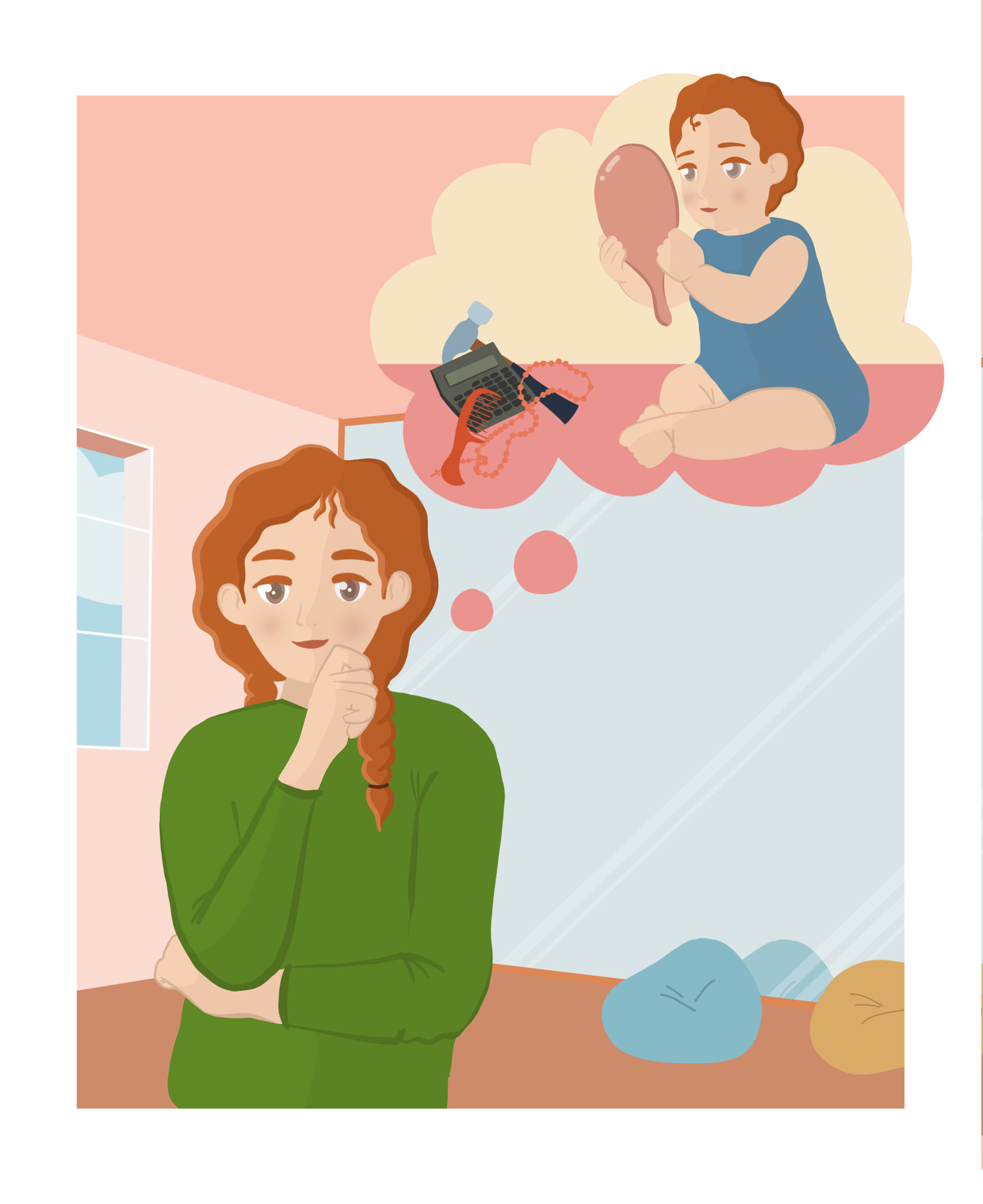
After some time, the drama teacher told the children to open their eyes again.
Each one of the children found an item placed in front of them and one after the other they said,
“I have a pair of scissors and it is used by a tailor.”
“I have a violin and it is used by a musician.”
“I have a ball and it is used by a player.”
“I have a mirror and a comb, and they are used by the hairdresser.”
“I have a rosary bead and it is used by religious persons and other people who pray.”
“I have colours and paint brush and they are used by a painter or an artist.”
“I have a book, and it is used by someone at school, a teacher or a writer.”
“I have a photo camera and it is used by a photographer.”
“Very good! said the teacher. “Now I want you to make a short mime according to the object that you have.”
So the one who had the scissors began to move the scissors as if he were cutting a piece of cloth just like the tailor.
The boy who had the violin started playing just like the musician. The one who had the ball started kicking it just like a footballer. Whoever had the mirror started looking at it and arranged his hair. Whoever had the rosary bead began to say the Our Father prayer. The girl who had the colours and paint brush started painting just like a painter. The one who had the book began to explain just like teachers do.
The girl who had the camera focused on a scene and took a photo just like a photographer.
When all the children finished their mime, one girl said to the teacher, “Sir, this is like what my mother did to my little sister when she turned one year old. It is called il-quċċija but I don’t know what it really means.”
“Yes, you are right!” exclaimed the teacher. “What we did today is called il-quċċija, and our friend Pete will tell us all about it.”
After a moment, Pete began, “Il-quċċija is a Maltese tradition which has been practiced in Malta since the 18th century. Il-quċċija is done at the baby’s first birthday party. The family and friends encourage the baby to crawl over to the objects which are placed on the floor or tray and to choose one. According to tradition, the first item picked represents the child’s career or profession, trades or lifestyle of the boy or girl.
The objects used can be various, such as a ball, a comb, a mirror, a paint brush, a rosary bead, a calculator, pair of scissors, a book, a musical instrument, money or credit card, ballet shoes, a hammer, an egg, a computer mouse or a mobile phone.
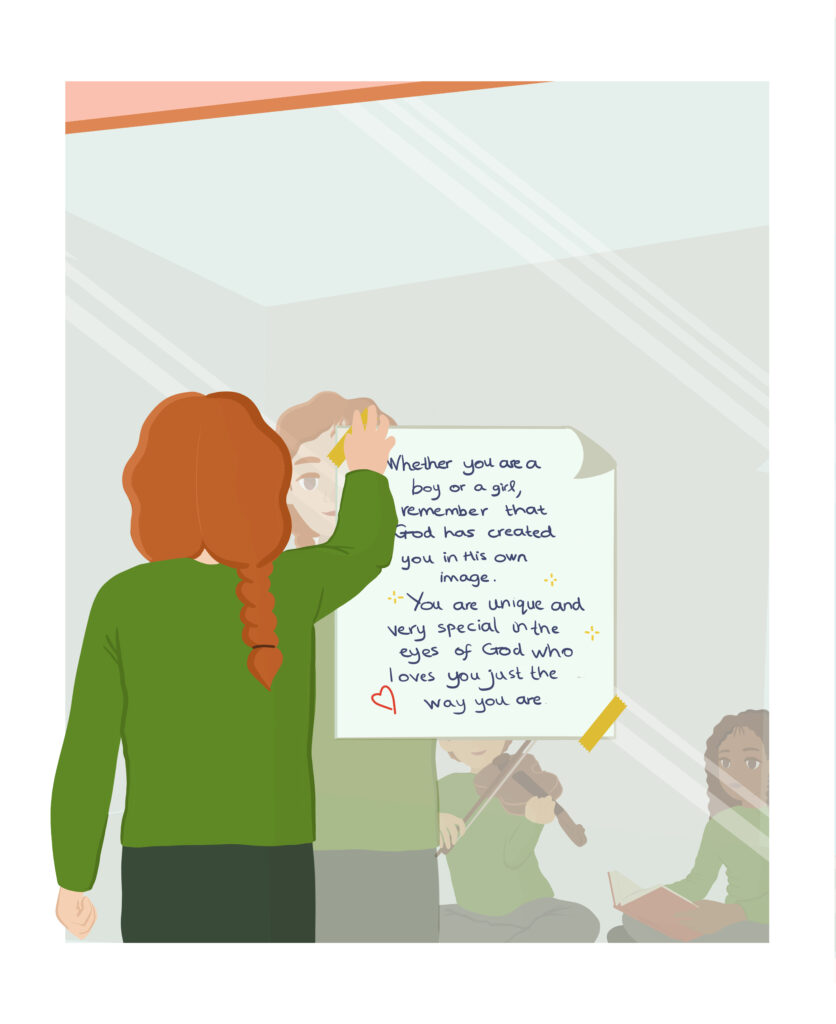
The children were very grateful to learn something new and thanked their friend Pete for all the information about il-quċċija.
Then the teacher turned to the girl and asked her,
“Do you remember what item your sister had picked up during il-quċċija?”
“Yes, I remember, sir. She had picked up a mirror because she saw her reflection in it and wanted to kiss and hug the beautiful face of the girl that was her own reflection.”
“Very well,” said the teacher and continued,
“so now I invite you to come in front of the big mirrors which you usually dance in front of. Take as much time as you need to look at the mirror. Look closely at yourself. Then hug the most wonderful thing you see in you.
It can either be something beautiful in your physique, personality, character, or else a good quality or talent that God has given you. Then say a thought or a thank-you prayer to God for your beautiful personality or quality you like; for example, being generous or a talent that He has given you.
The drama session ended with the children sharing a prayer of thanks together for their amazing talents in dancing, acting, singing, and playing musical instruments that make so many people happy.
Then they wrote a beautiful message on a paper and attached it to the mirror. The message read:
Whether you are a boy or a girl, remember that God has created you in His own image. You are unique and very special in the eyes of God who loves just the way you are.
Dimostrate e Nominate – Tradizione Maltese
“Forza, sbrigatevi,” disse l’insegnante di recitazione e di ballo ai ragazzi.
“Andate e cercate il vostro cuscino che sta nel mezzo della sala e sedetevi su di esso. Chiudete gli occhi finché il nostro amico Pete non avrà messo articoli diversi di fronte a ciascuno di voi. Quando ve lo dico, potreste aprire gli occhi di nuovo. Poi, voglio che voi guardiate l’articolo, lo nominiate, diciate il suo uso nonché la carriera della persona che lo usa. Mi avete tutti capito?” chiese l’insegnante.
“Sì, L’abbiamo capita,” risposero i ragazzi.

“Va bene, allora cominciamo.”
Dopo qualche tempo, l’insegnante di recitazione disse ai ragazi di chiudere gli occhi di nuovo.
Ciascun ragazzo trovò un articolo messo di fronte a sé, e uno dopo l’altro dissero,
“Ci ho un paio di forbici e le usa il sarto.”
“Ci ho un violino e lo usa un musicista.”
“Ci ho un pallone e lo usa un giocatore.”
“Ci ho uno specchio e un pettine, e li usa il parrucchiere.”
“Ci ho una corona del rosario e la usano persone religiose e altra gente che prega.”
“Ci ho dei colori e un pennello e li usa un pittore o un artista.
“Ci ho un libro, e si usa da qualcuno a scuola, un insegnante o uno scrittore.”
“Ci ho una camera fotografica e l’usa un fotografo.”
“Ottimo! Disse l’insegnante. “Ora voglio che voi facciate un breve mimo secondo l’articolo che avete.”
Così colui che aveva le forbici iniziò a muoverele come se tagliasse un pezzo di tessuto esattamente come fa il sarto.
Il ragazzo che aveva il violino si mise a suonare proprio come fa il musicista. Quello che aveva il pallone si mise a calciarlo proprio come un calciatore. Chi aveva lo specchio si mise a guardarsi in esso per acconciarsi i capelli. Chi aveva la corona del rosario si mise a recitare la preghiera del Paternoster. La ragazza che aveva i colori e il pennello si mise a dipingere proprio come un pittore. Chi aveva il libro si mise a spiegare proprio coe fanno gli insegnanti.
La ragazza che aveva la camera fotografica mise a fuoco una scena e scattò una foto proprio come un fotografo.
Finite queste azioni mimiche, una ragazza disse all’insegnante, “Maestro, questo è come ha fatto mia mamma alla mia sorellina quando ha compiuto un anno. Si chiama il-quċċija , ma non so che cosa veramente significhi.”
“Sì, hai ragione!” esclamò l’insegnante. “Quel che abbiamo fatto oggi si chiama il-quċċija, e il nostro amico Pete ce ne dirà tutto.”
Dopo alcuni istanti, Pete cominciò a spiegare, “Il-quċċija è una tradizione maltese, ancora viva, che risale al XVIII secolo. Il-quċċija si fa quando si celebra il primo compleanno del bambino. Familiari e amici spingono il bambino a camminare carponi verso gli articoli messi sul pavimento o su un vassoio per sceglierne uno. Secondo la tradizione, il primo articolo scelto rappresenta la carriera o la professione, il mestiere e lo stile di vita che adotterà il bambino da grande.
Gli oggetti usati possono essere vari: pallone, pettine, spcchio, pennello, corona del rosario, macchina calcolatrice, paio di forbici, libro, strumento musicale, denaro o carta di credito, scarpette da ballo, martello, uovo, mouse del computer, o cellulare.
I ragazzi furono molto grati per l’informazione nuova sul quċċija data loro da Pete, per cui lo ringraziarono.

Dopo l’insegnante si voltò verso la ragazza e le chiese, “Ricordi quale oggetto scelse tua sorella durante la quċċija?”
“Sì, lo ricordo, prof. Lei afferrò uno specchio perché ci vide il proprio riflesso e voleva baciare e abbracciare il bel volto di quella ragazza che era però il proprio riflesso.
“Ottimo,” disse il maestro, che aggiunse,
“così ora v’invito a farvi avanti davanti ai grandi specchi di fronte a cui voi di solito ballate. Prendi tutto il tempo che volete per guardarvi allo specchio. Guardatevi da vicino. Poi stringete al cuore la cosa più splendida che vedete in voi.
Può essere qualcosa bella nel vostro fisico, personalità, carattere, o una qualità o talento che Dio ti ha dato. Poi rivolgetevi a Dio e ditegli una preghiera di ringraziamento per la vostra bella personalità o qualità che avete; ad esempio, per la vostra generosità o predisposizione che Lui vi ha dato.
La sessione di recitazione terminò con i ragazzi che rivolgevano una preghiera di ringraziamento per i loro talenti meravigliosi: ballo, recitazione, suonare strumenti musicali che fa tanta gente felice.
Alla fine scrissero un bel messaggio su un foglio che attaccarono allo specchio. Il messaggio diceva:
Che siate maschio o femmina, ricorda che Dio ti ha creato a Sua immagine. Tu sei unico e molto speciale agli occhi di Dio che ti ama proprio come tu sei.
Resources related to this story
We want to get to know you. To be able to bookmark your favourite content, please log in or sign up below.
User Sign Up
Discover more resources


